Abstract
In mice, yohimbine appears to accentuate the normal “alarm” reactions (alerting, flight) to external stimuli. Imipramine increases this effect and at the same time converts a non-lethal dose of yohimbine into a lethal one. The effect of imipramine is greatly reduced by adrenalectomy or by treatment with reserpine, syrosingopine, ganglion-blocking drugs or adrenaline antagonists acting on sympathetic β-receptors. Hypnotic, anti-convulsant or anaesthetic agents, tetrabenazine or antagonists of 5-hydroxytryptamine do not reduce the imipramine effect. A variety of drugs which, like imipramine, are known to interfere with the tissue binding of noradrenaline also increase the toxicity of yohimbine. Yohimbine significantly reduces brain noradrenaline content; adrenal catechol amines are slightly reduced. The results suggest that yohimbine releases noradrenaline from stores or nerves as a consequence of increased central sympathetic activity. Imipramine increases the actions and toxicity of yohimbine by increasing the effects of the released noradrenaline on β-receptors. The lethal effects of a high dose of yohimbine alone are not reduced by any of the treatments tested, and appear not to result from activation of sympathetic mechanisms.
Full text
PDF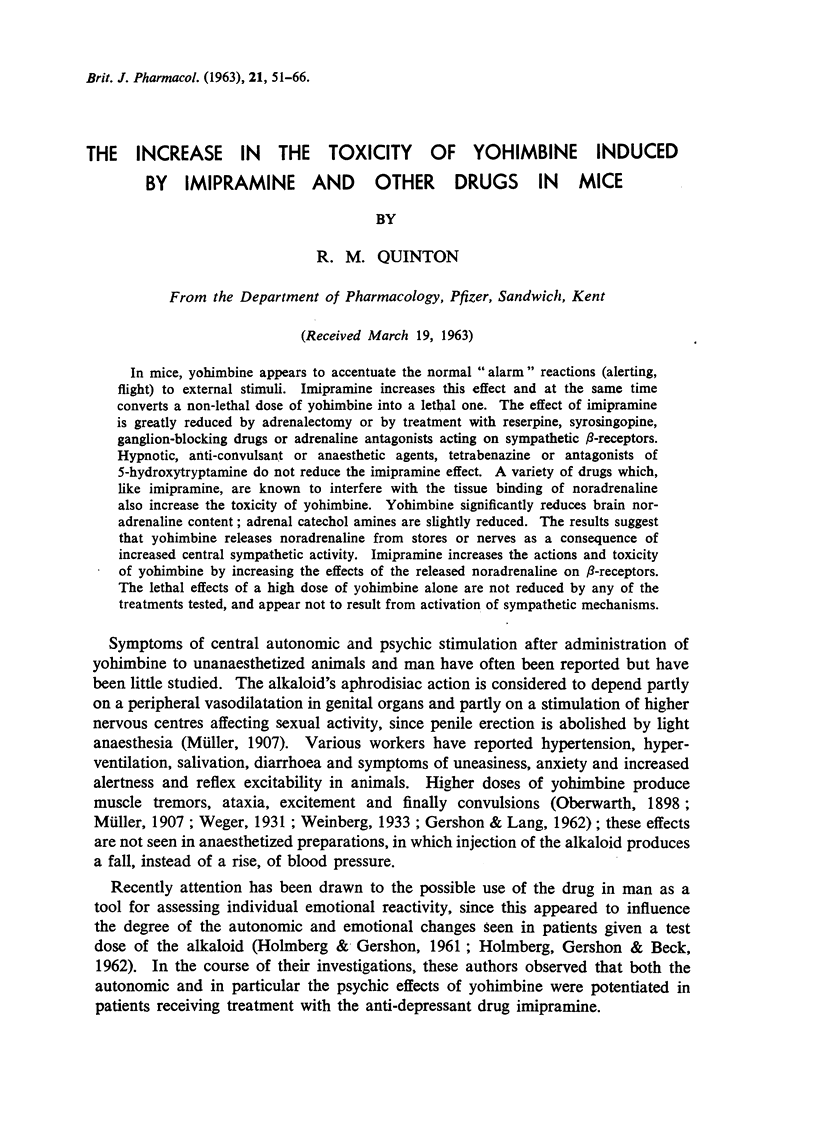
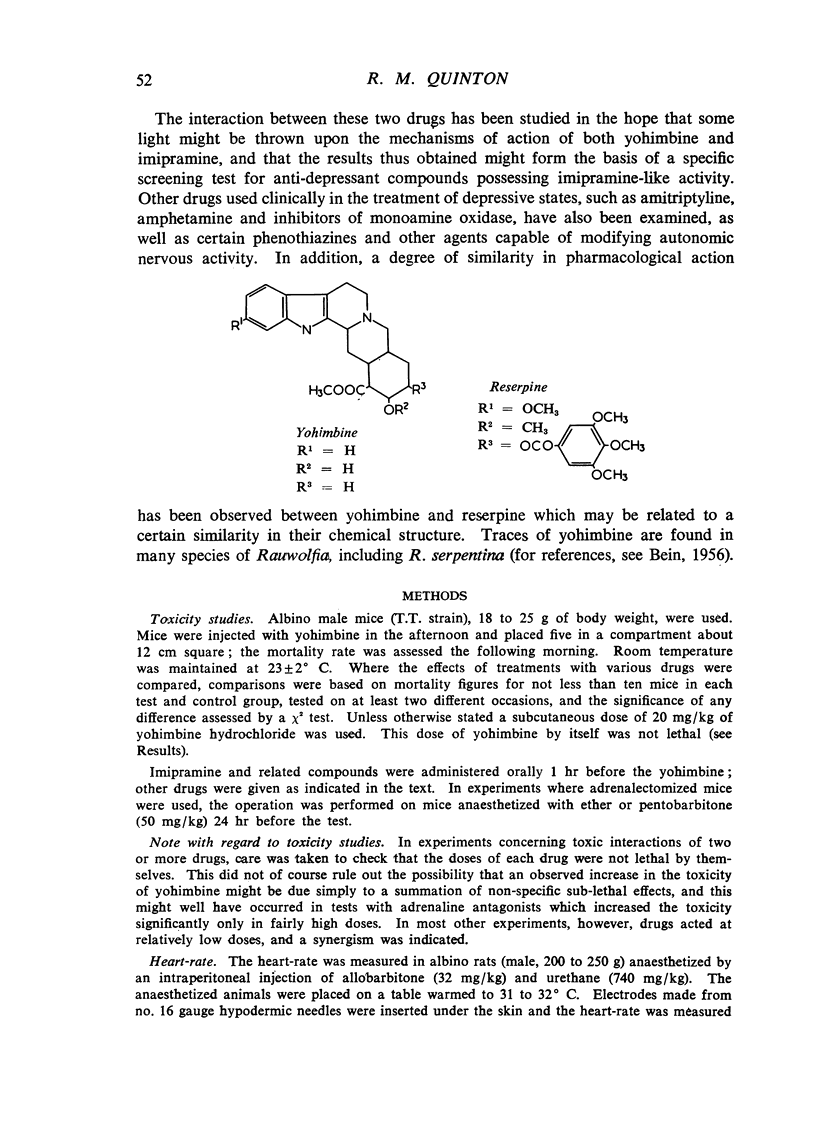
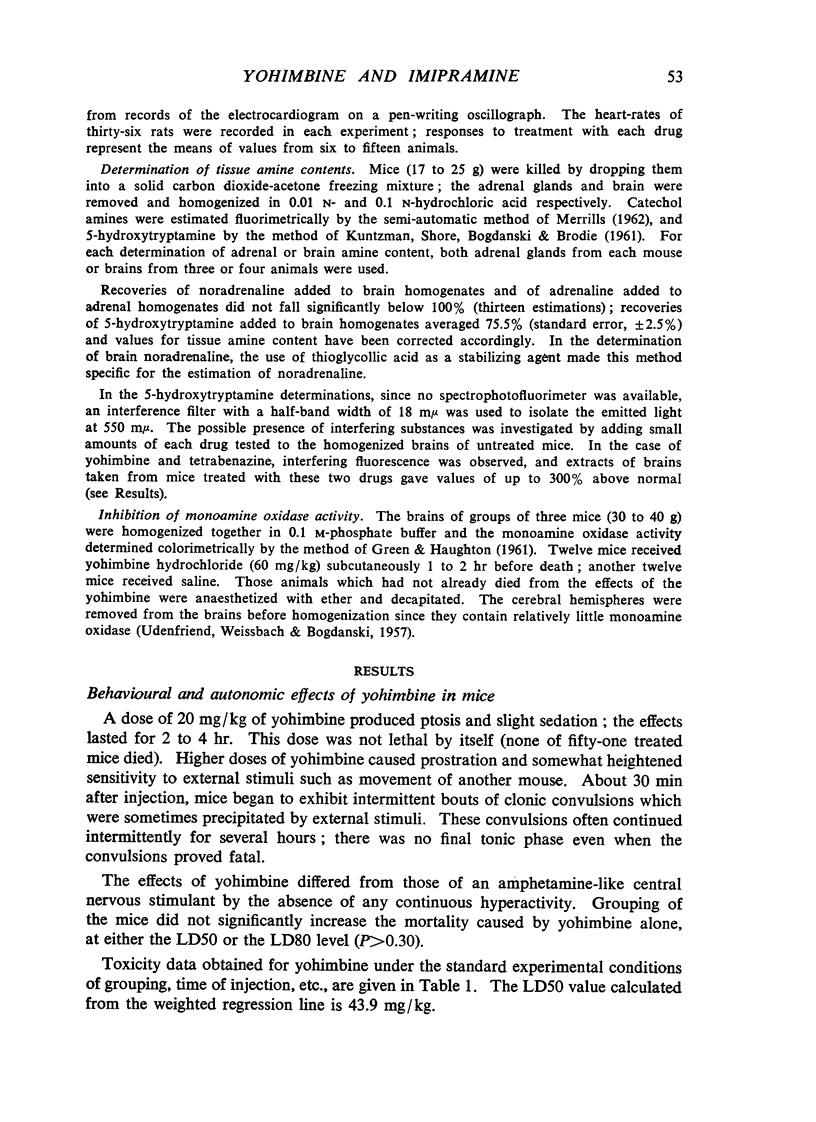
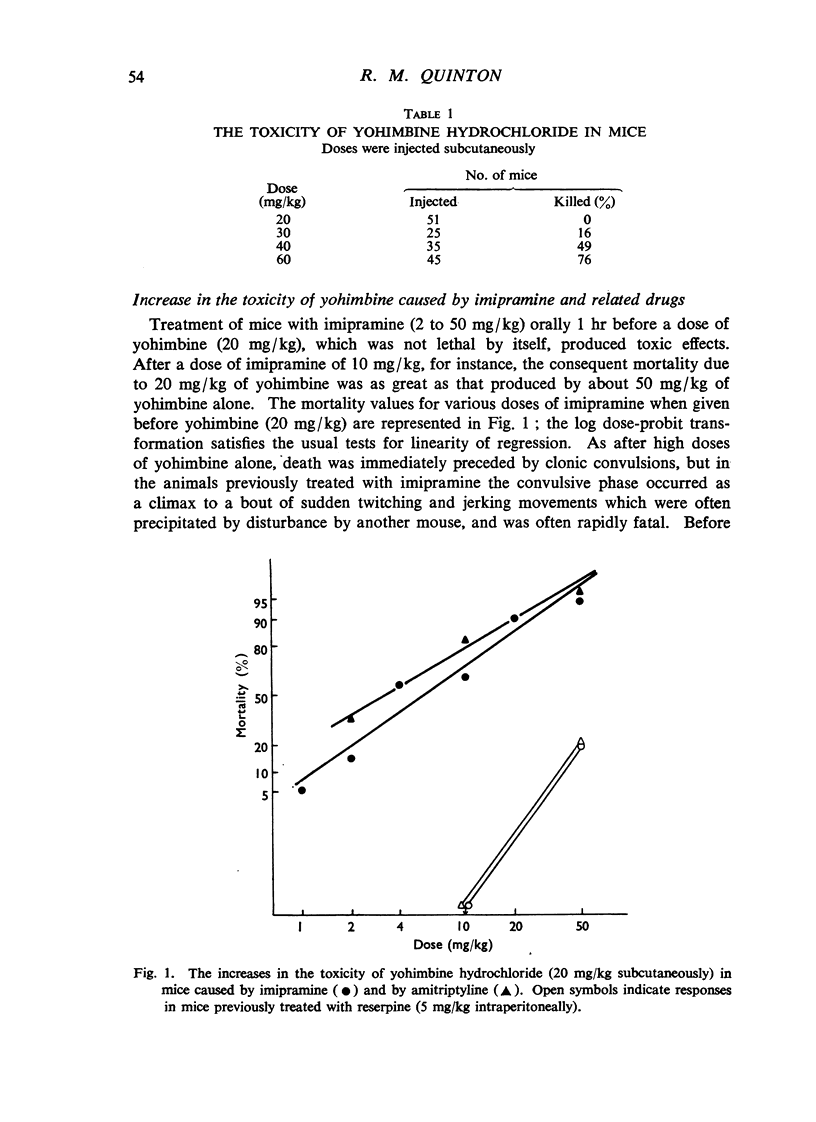
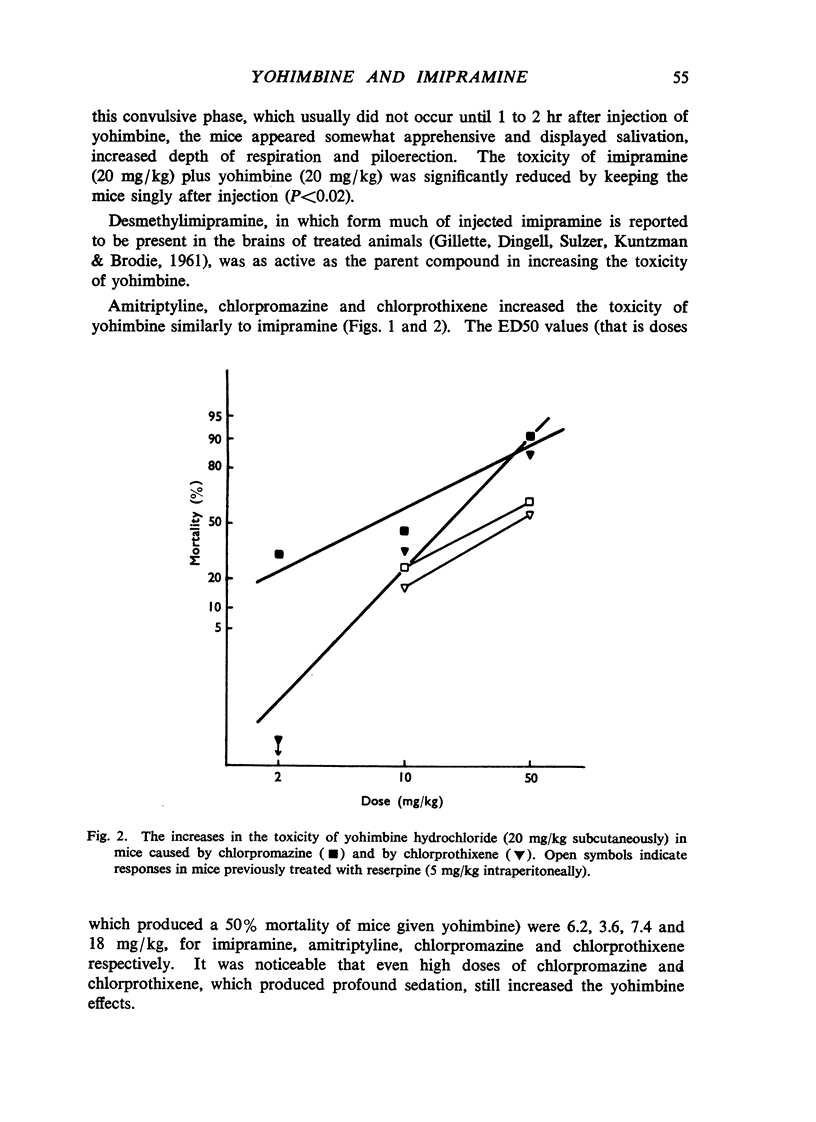
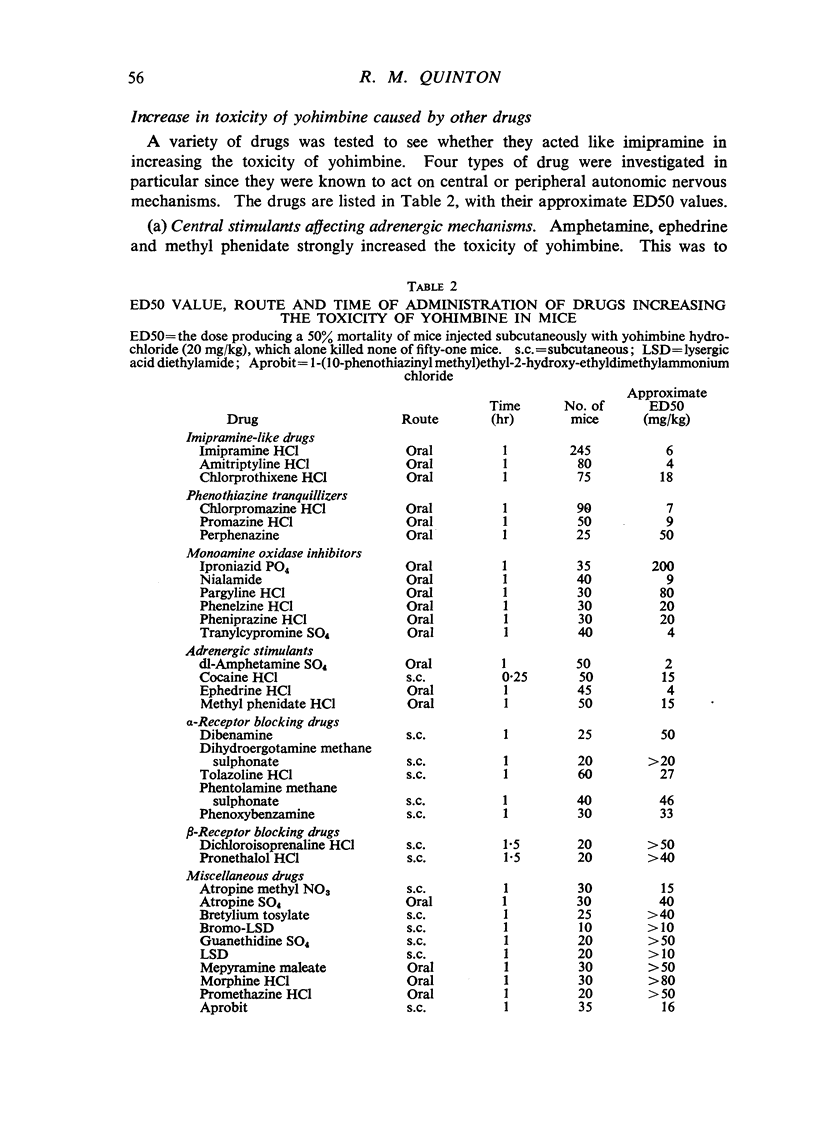
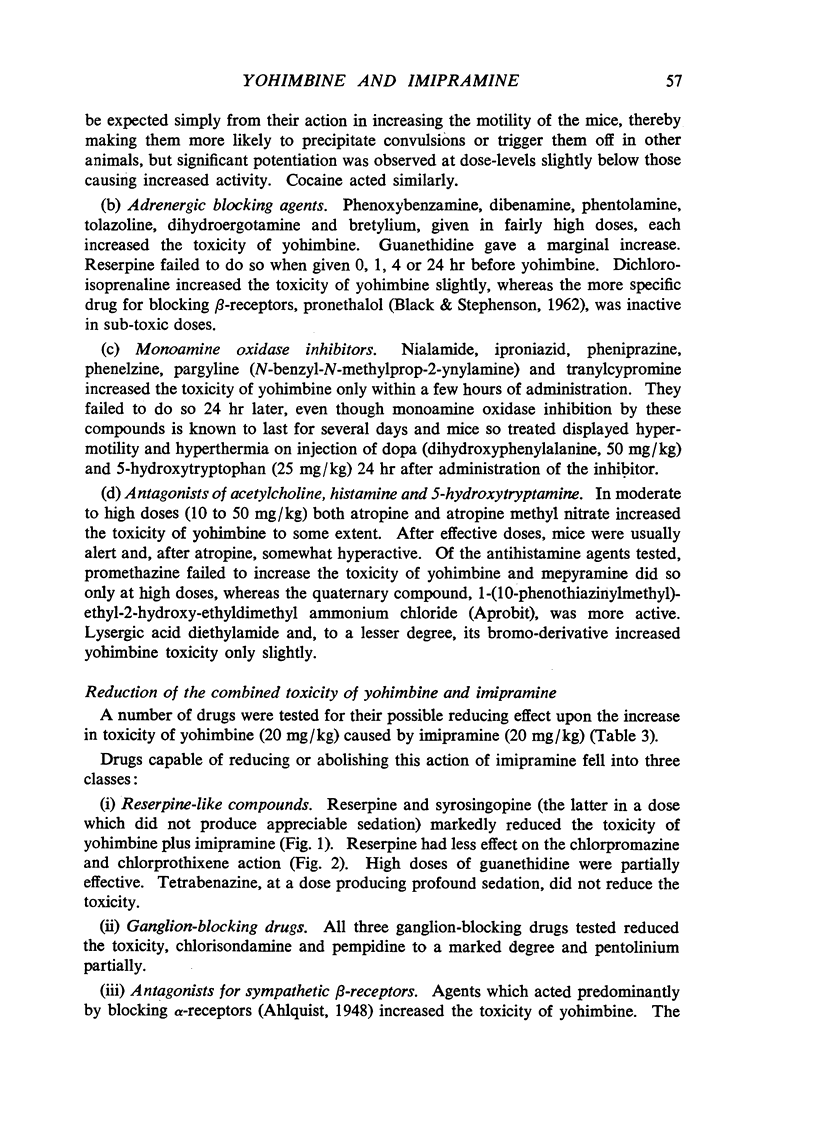
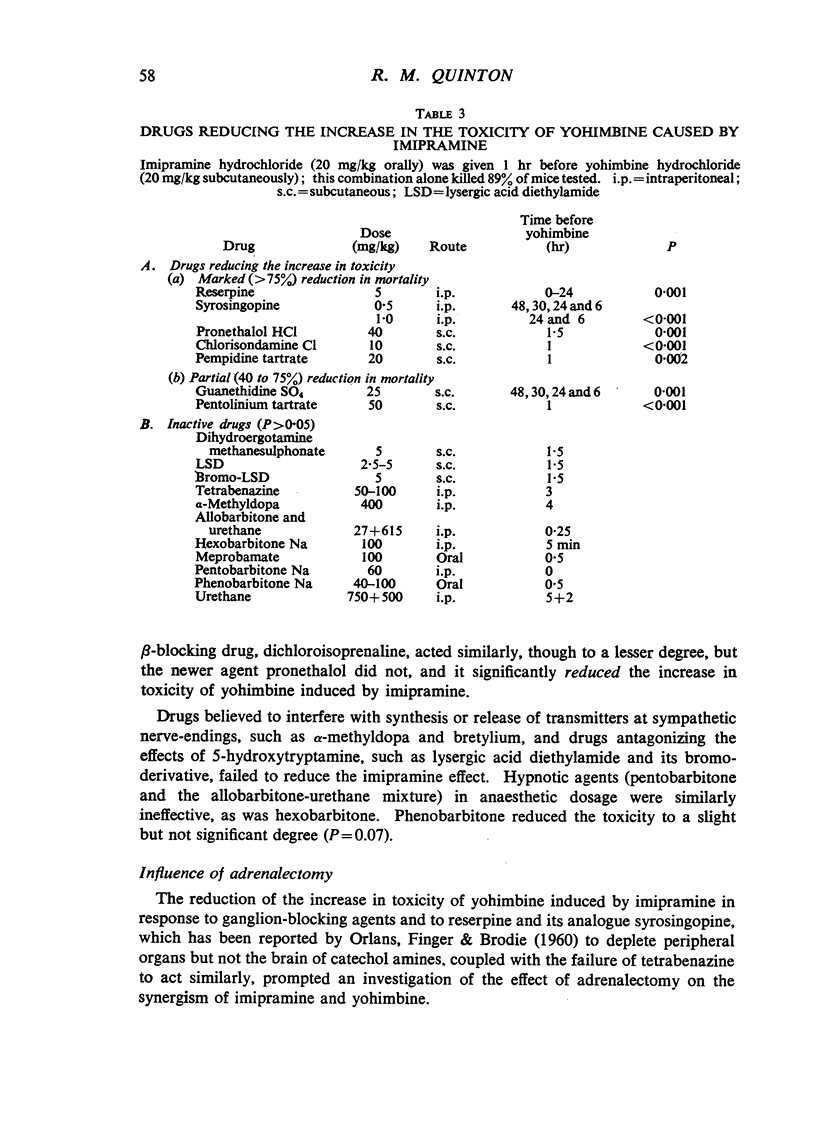
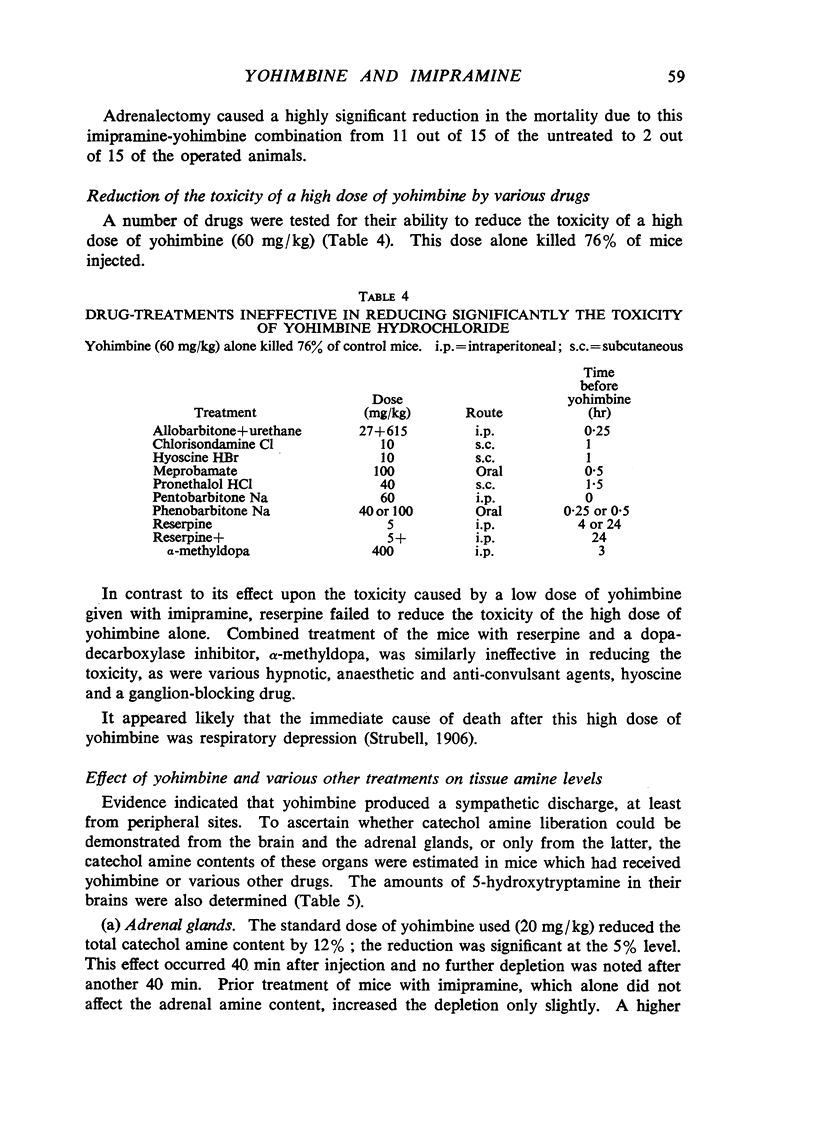
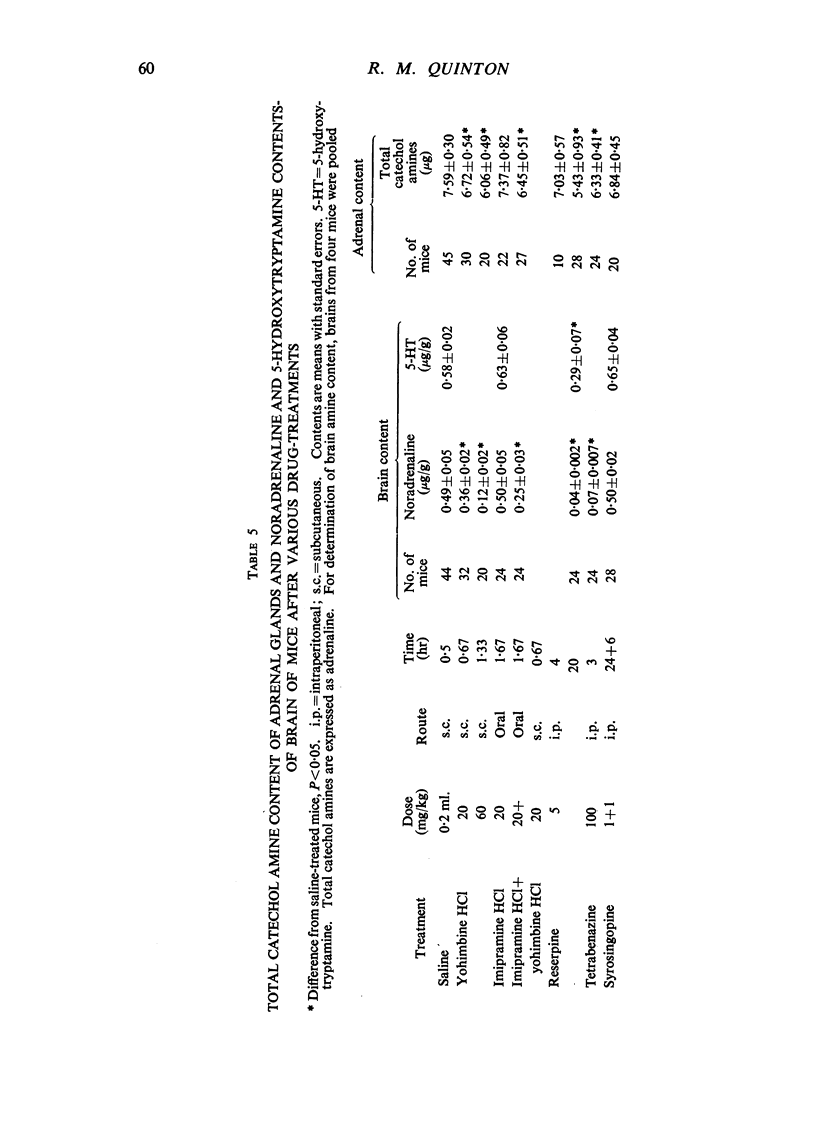

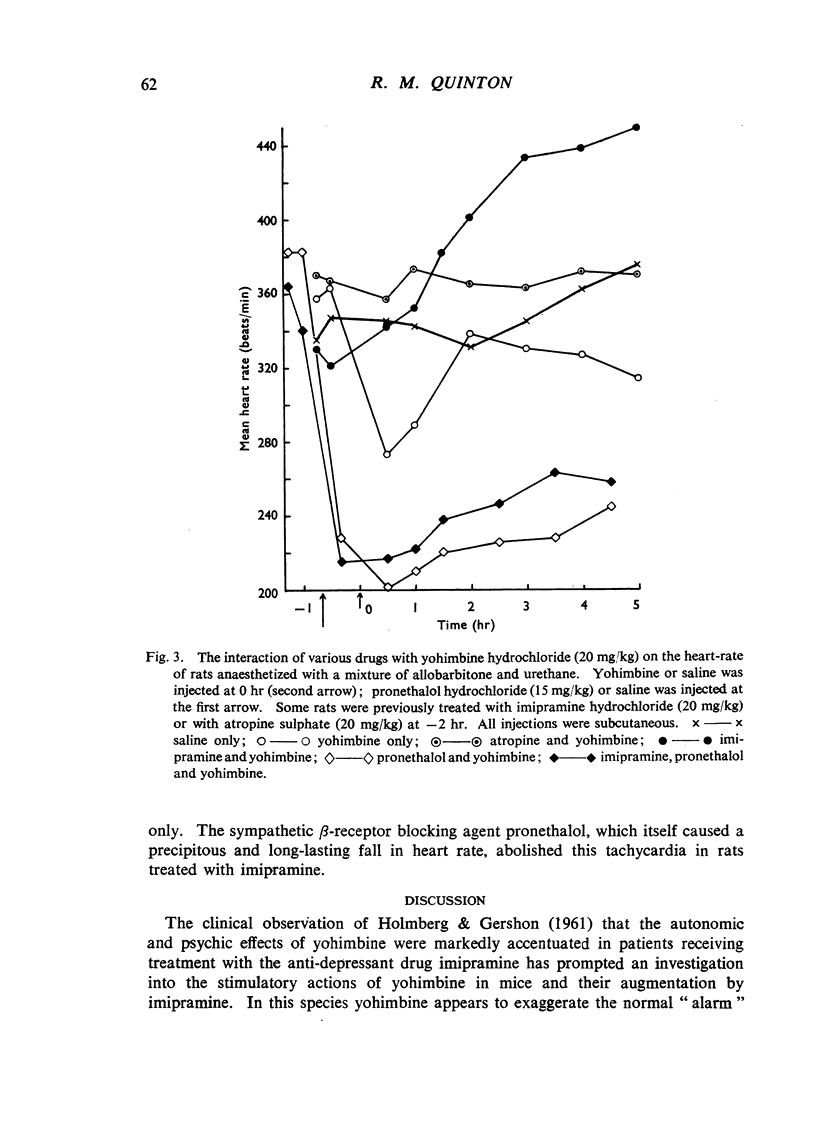
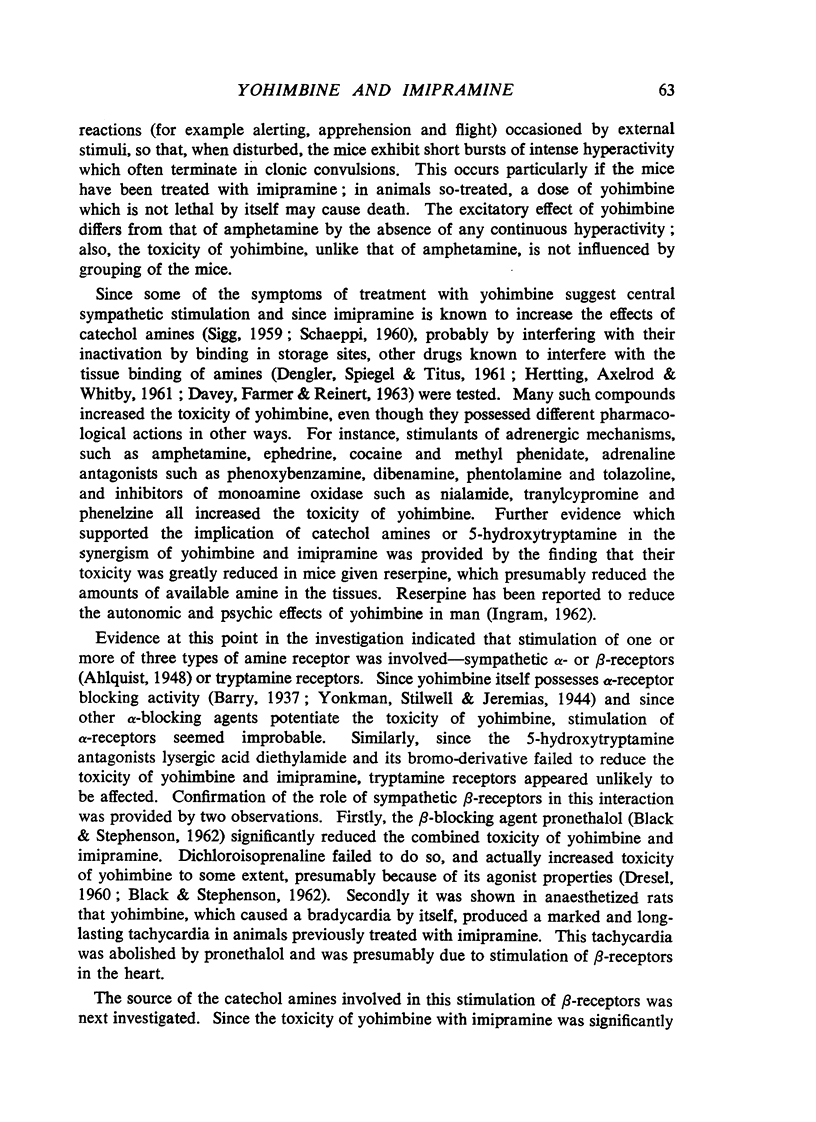
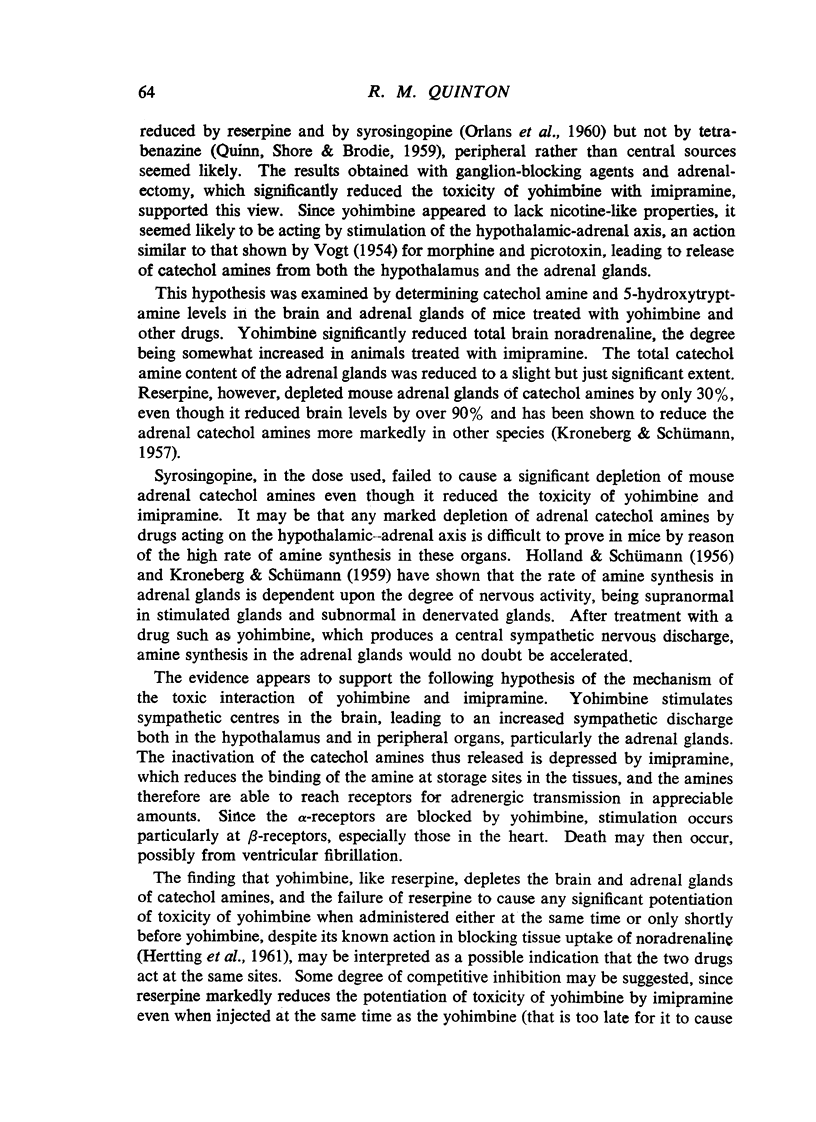
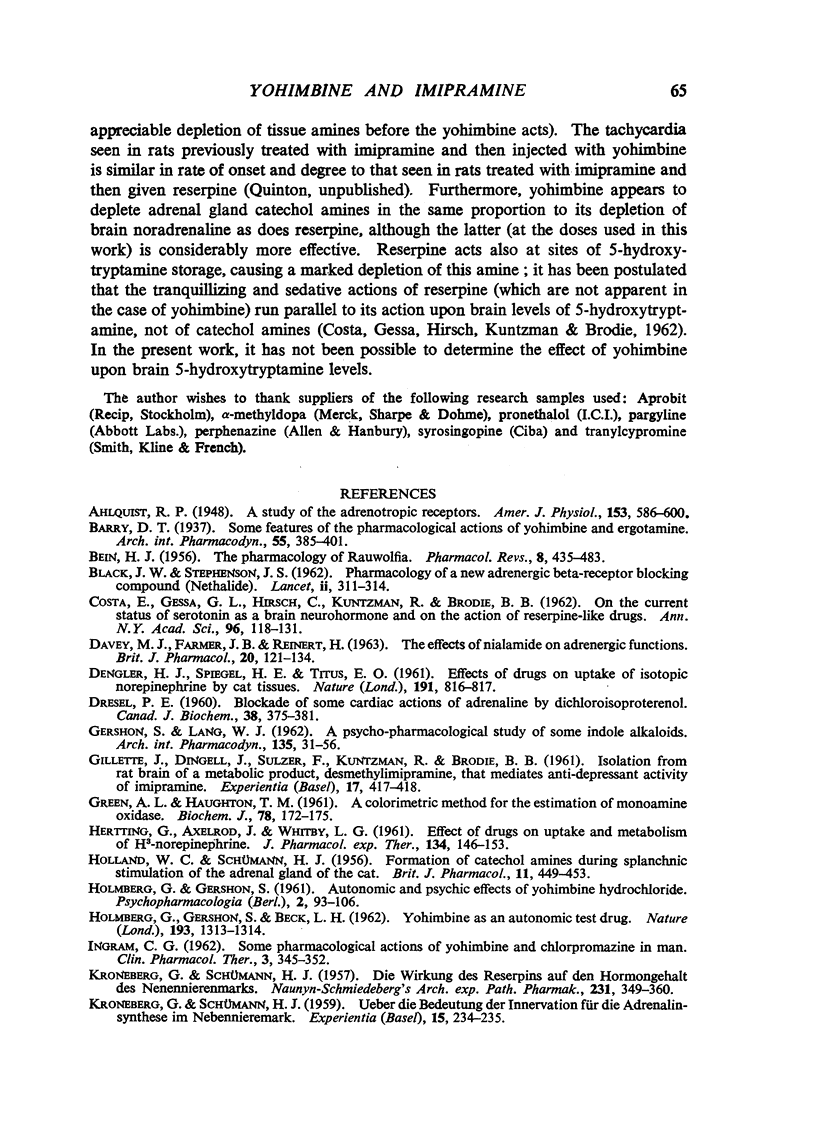
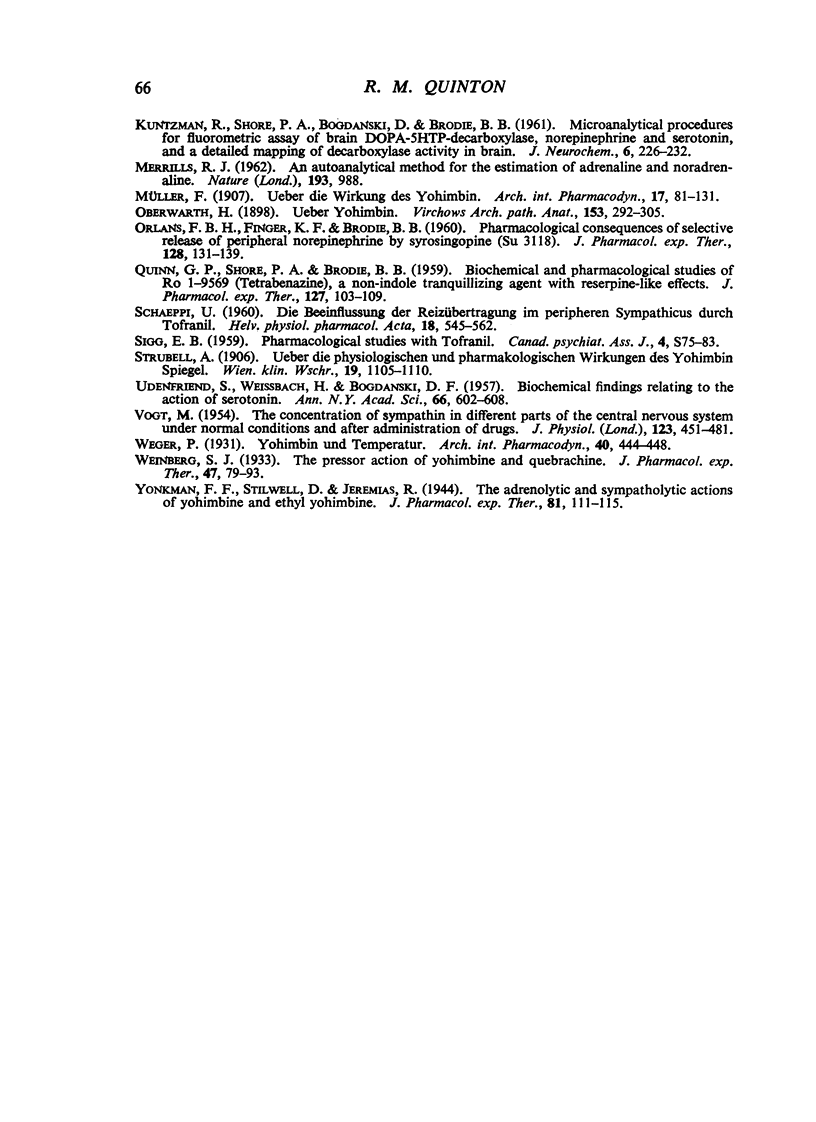
Selected References
These references are in PubMed. This may not be the complete list of references from this article.
- BEIN H. J. The pharmacology of Rauwolfia. Pharmacol Rev. 1956 Sep;8(3):435–483. [PubMed] [Google Scholar]
- BLACK J. W., STEPHENSON J. S. Pharmacology of a new adrenergic beta-receptor-blocking compound (Nethalide). Lancet. 1962 Aug 18;2(7251):311–314. doi: 10.1016/s0140-6736(62)90103-4. [DOI] [PubMed] [Google Scholar]
- COSTA E., GESSA G. L., HIRSCH C., KUNTZMAN R., BRODIE B. B. On current status of serotonin as a brain neurohormone and in action of reserpinelike drugs. Ann N Y Acad Sci. 1962 Jan 13;96:118–133. doi: 10.1111/j.1749-6632.1962.tb50107.x. [DOI] [PubMed] [Google Scholar]
- DAVEY M. J., FARMER J. B., REINERT H. The effects of nialamide on adrenergic functions. Br J Pharmacol Chemother. 1963 Feb;20:121–134. doi: 10.1111/j.1476-5381.1963.tb01303.x. [DOI] [PMC free article] [PubMed] [Google Scholar]
- DENGLER H. J., SPIEGEL H. E., TITUS E. O. Effects of drugs on uptake of isotopic norepinephrine by cat tissues. Nature. 1961 Aug 19;191:816–817. doi: 10.1038/191816a0. [DOI] [PubMed] [Google Scholar]
- DRESEL P. E. Blockade of some cardiac actions of adrenaline by dichloroisoproterenol. Can J Biochem Physiol. 1960 Apr;38:375–381. [PubMed] [Google Scholar]
- GERSHON S., LANG W. J. A psycho-pharmacological study of some indole alkaloids. Arch Int Pharmacodyn Ther. 1962 Jan 1;135:31–56. [PubMed] [Google Scholar]
- GILLETTE J. R., DINGELL J. V., SULSER F., KUNTZMAN R., BRODIE B. B. Isolation from rat brain of a metabolic product, desmethylimipramine, that mediates the antidepressant activity of imipramine (Tofranil). Experientia. 1961 Sep 15;17:417–418. doi: 10.1007/BF02157980. [DOI] [PubMed] [Google Scholar]
- GREEN A. L., HAUGHTON T. M. A colorimetric method for the estimation of monoamine oxidase. Biochem J. 1961 Jan;78:172–175. doi: 10.1042/bj0780172. [DOI] [PMC free article] [PubMed] [Google Scholar]
- HERTING G., AXELROD J., WHITBY L. G. Effect of drugs on the uptake and metabolism of H3-norepinephrine. J Pharmacol Exp Ther. 1961 Nov;134:146–153. [PubMed] [Google Scholar]
- HOLLAND W. C., SCHUMANN H. J. Formation of catechol amines during splanchnic stimulation of the adrenal gland of the cat. Br J Pharmacol Chemother. 1956 Dec;11(4):449–453. doi: 10.1111/j.1476-5381.1956.tb00015.x. [DOI] [PMC free article] [PubMed] [Google Scholar]
- HOLMBERG G., GERSHON S. Autonomic and psychic effects of yohimbine hydrochloride. Psychopharmacologia. 1961;2:93–106. doi: 10.1007/BF00592678. [DOI] [PubMed] [Google Scholar]
- HOLMBERG G., GERSHON S., BECK L. H. Yohimbine as an autonomic test drug. Nature. 1962 Mar 31;193:1313–1314. doi: 10.1038/1931313b0. [DOI] [PubMed] [Google Scholar]
- KRONEBERG G., SCHUMANN H. J. Die Wirkung des Reserpins auf den Hormongehalt des Nebennierenmarks. Naunyn Schmiedebergs Arch Exp Pathol Pharmakol. 1957;231(4):349–360. [PubMed] [Google Scholar]
- KRONEBERG G., SHUMANN H. J. Uber die Bedeutung der Innervation für die Adrenalinsynthese im Nebennierenmark. Experientia. 1959 Jun 15;15(6):234–235. doi: 10.1007/BF02158125. [DOI] [PubMed] [Google Scholar]
- KUNTZMAN R., SHORE P. A., BOGDANSKI D., BRODIE B. B. Microanalytical procedures for fluorometric assay of brain DOPA-5HTP decarboxylase, norepinephrine and serotonin, and a detailed mapping of decarboxylase activity in brain. J Neurochem. 1961 Feb;6:226–232. doi: 10.1111/j.1471-4159.1961.tb13469.x. [DOI] [PubMed] [Google Scholar]
- MERRILLS R. J. An autoanalytical method for the estimation of adrenaline and noradrenaline. Nature. 1962 Mar 10;193:988–988. doi: 10.1038/193988a0. [DOI] [PubMed] [Google Scholar]
- ORLANS F. B., FINGER K. F., BRODIE B. B. Pharmacological consequences of the selective release of peripheral norepinephrine by syrosingopine (Su 3118). J Pharmacol Exp Ther. 1960 Feb;128:131–139. [PubMed] [Google Scholar]
- QUINN G. P., SHORE P. A., BRODIE B. B. Biochemical and pharmacological studies of RO 1-9569 (tetrabenazine), a nonindole tranquilizing agent with reserpine-like effects. J Pharmacol Exp Ther. 1959 Oct;127:103–109. [PubMed] [Google Scholar]
- SCHAEPPI U. [The influence of Tofranil on the transmission of stimuli in the peripheral sympathetic nervous system]. Helv Physiol Pharmacol Acta. 1960;18:545–562. [PubMed] [Google Scholar]
- UDENFRIEND S., WEISSBACH H., BOGDANSKI D. F. Biochemical findings relating to the action of serotonin. Ann N Y Acad Sci. 1957 Mar 14;66(3):602–608. doi: 10.1111/j.1749-6632.1957.tb40750.x. [DOI] [PubMed] [Google Scholar]
- VOGT M. The concentration of sympathin in different parts of the central nervous system under normal conditions and after the administration of drugs. J Physiol. 1954 Mar 29;123(3):451–481. doi: 10.1113/jphysiol.1954.sp005064. [DOI] [PMC free article] [PubMed] [Google Scholar]


